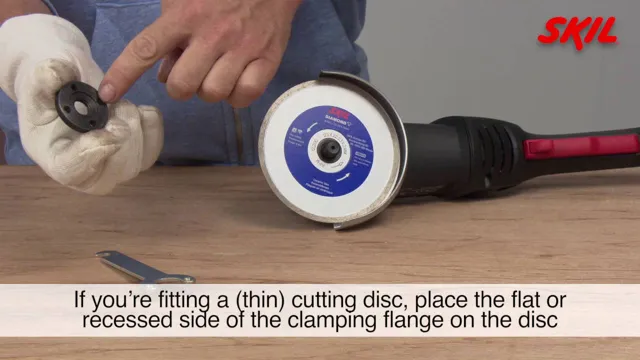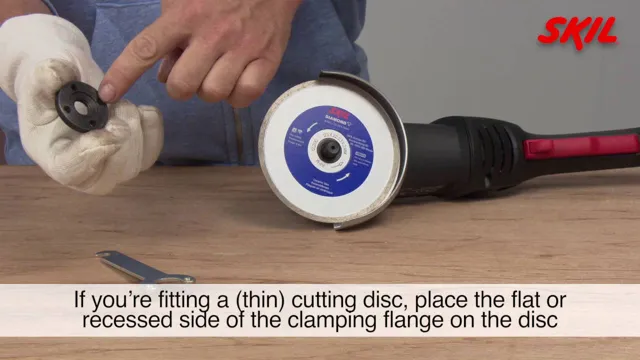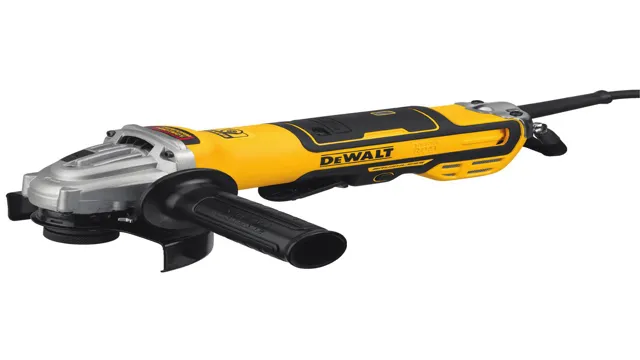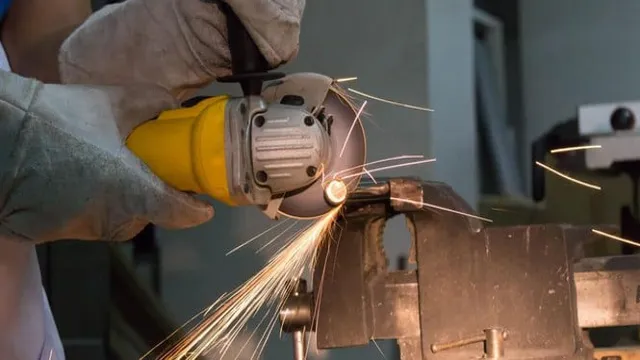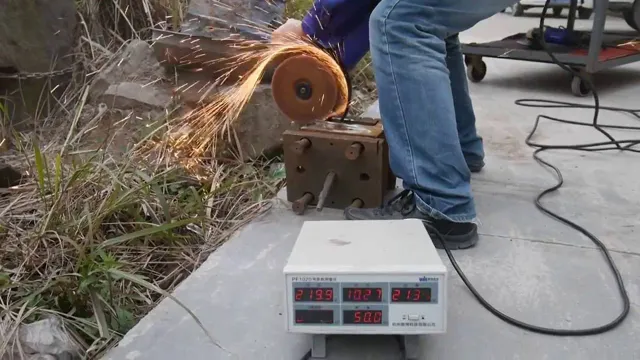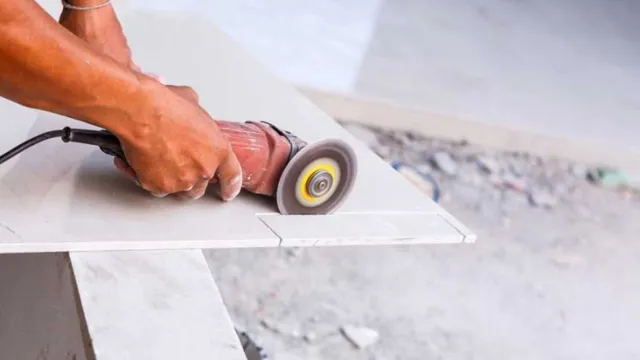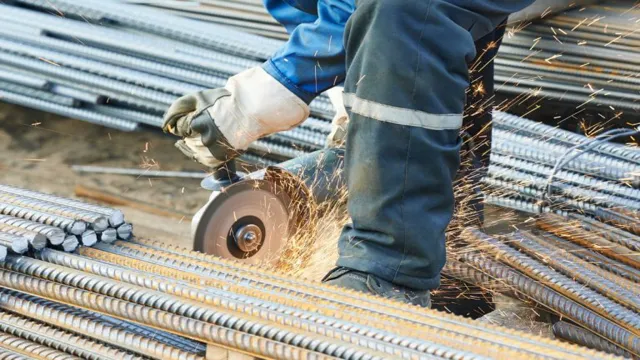What Does an Angle Grinder Do? Discover its Versatile Functions and Applications
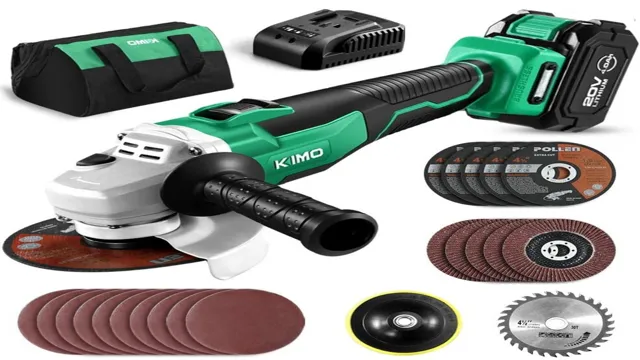
If you’re new to the DIY world or are looking to expand your collection of power tools, you may be wondering what an angle grinder is and what it does. Simply put, an angle grinder is a versatile tool that can be used for a variety of tasks, such as cutting and grinding metal, concrete, and other materials. It’s like a Swiss Army knife for power tools, providing precision and power in a compact and easy-to-use package.
In this article, we’ll explore the many uses of this tool and why it’s a must-have for any DIYer or professional contractor. So buckle up and get ready to learn all about what an angle grinder can do!
Overview
An angle grinder is a versatile power tool that can be used for various purposes in different industries, including construction, metalworking, and woodworking. But what does an angle grinder do? It’s essentially a handheld device that uses a rotating disk to grind, cut, or polish different materials such as metal, stone, concrete, tiles, and more. With its powerful motor and abrasive disk, an angle grinder can easily cut through bolts, remove rust and paint, or grind down welds.
It can also sharpen tools and blades, carve intricate designs, and shape wood. However, it’s important to use an angle grinder safely and correctly, as it can be dangerous if mishandled. Always wear protective gear, ensure the disk is securely attached, and avoid using excessive force or pressure.
So, whether you’re a professional or a DIY enthusiast, an angle grinder is a useful tool to have in your arsenal.
Definition of an Angle Grinder
An angle grinder is a versatile power tool that is commonly used in workshops and construction sites. It is a handheld tool that is typically powered by electricity or compressed air and features a rotating disc that can be switched out for various attachments depending on the job. The primary purpose of an angle grinder is to grind and cut materials, such as metal, wood, and stone.
It is also used for polishing surfaces and removing rust and paint. The compact size of an angle grinder makes it useful for working in tight spaces and its adjustable guard keeps the user safe from flying debris. When using an angle grinder, it’s important to wear protective gear, such as safety glasses, gloves, and ear protection to prevent injury.
Overall, an angle grinder is a handy tool that is essential for any DIY enthusiast or professional contractor.
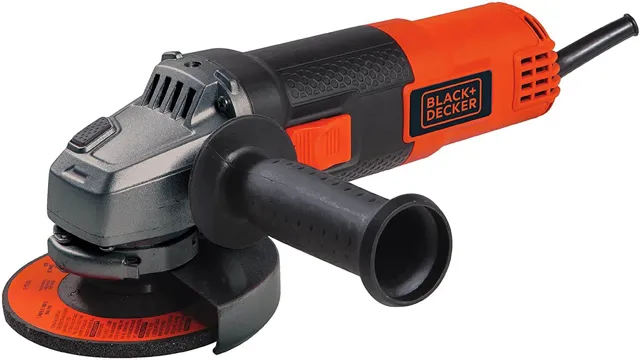
Components of an Angle Grinder
An angle grinder is a powerful tool that’s perfect for cutting, polishing, and grinding. It’s commonly used in workshops and construction sites. The components of an angle grinder include the body, handle, disc guard, disc nut, spindle lock, on/off switch, and power cord.
The body of an angle grinder houses the motor and all the other components. The handle provides a comfortable grip during operation, while the disc guard provides safety by preventing any debris from flying back at the operator. The disc nut is used to secure the grinding disc in place, while the spindle lock is there to keep the spindle from rotating during disc changes.
The on/off switch is located typically at the side of the tool, while the power cord provides the necessary electrical connection. All of these components work together to make angle grinders versatile and efficient power tools.
Uses of an Angle Grinder
Angle grinders are highly versatile power tools that can perform a variety of tasks with ease and precision. They are essentially handheld grinders that use a spinning disc or wheel to cut, grind, sand, polish, and restore various materials and surfaces. An angle grinder can be used for a range of tasks, such as cutting through metal, tiles, and bricks, shaping wood, removing rust or paint, and even sharpening blades.
They are also known for their ability to smoothen rough edges and surfaces, making them perfect for finishing touches and refinishing projects. Angle grinders come in different sizes and speeds, allowing you to choose the right tool for the task at hand. They are essential tools for professionals and DIY enthusiasts alike, as they are both reliable and easy to use.
When working with an angle grinder, it is important to take safety precautions, such as wearing protective gear and using the tool properly. Overall, an angle grinder can be a powerful and effective tool for a wide range of tasks, making it an essential tool for any workshop or toolbox.
Cutting Metal
An angle grinder is a versatile and powerful tool that can be used for a variety of metal cutting tasks. One of its main uses is for cutting metal sheets, rods, and pipes. This tool can make precise cuts in different angles and shapes, giving the user more control and versatility in their metalworking projects.
The angle grinder can be fitted with a range of abrasive discs to cut through different types of metal effectively. It is an essential tool for metalworkers and welders who require precise and accurate cutting. Whether you’re working on a DIY project or professional metalworking, an angle grinder can make your job easier and more efficient.
Its portability and ease of use make it a great addition to any tool collection. So, if you’re looking for a tool to cut through metal sheets, pipes or any other metal material, an angle grinder is a versatile, reliable and cost-effective choice that will make your metalworking projects a breeze.
Grinding Metal and Concrete
An angle grinder is a versatile tool that can be used for grinding metal and concrete. Its uses are varied and it can be used for both DIY and professional purposes. One of the most common uses of an angle grinder is for sharpening garden tools such as shears and pruning blades.
It can also be used for cutting through bolts and metal tubes, removing rust from metal surfaces, and shaping and carving wood. When it comes to concrete, an angle grinder can be used to remove paint, glue, and other coatings, as well as to smooth out rough edges and uneven lumps. With the right attachments, an angle grinder can also be used for sanding and polishing metal and other surfaces.
Overall, an angle grinder is a valuable tool to have in your toolbox, whether you’re a DIY enthusiast or a seasoned pro.
Removing Rust and Paint
When it comes to removing rust and paint, an angle grinder is a handy tool that can make the job much easier. An angle grinder is a versatile tool that can be used for a variety of tasks, including cutting, grinding, and sanding. Its powerful motor and abrasive wheels make it ideal for removing tough coatings like rust and paint.
By using an angle grinder, you can remove paint and rust from metal surfaces quickly and effectively. It’s important to use the right type of abrasive wheel for the job, and to wear appropriate safety gear, such as gloves and eye protection. With careful handling, an angle grinder can be a game changer when it comes to removing rust and paint from metal objects like automotive parts or outdoor furniture.
So why struggle with sandpaper and wire brushes when you can use an angle grinder to get the job done in no time?
Safety Tips When Using an Angle Grinder
An angle grinder is a versatile power tool commonly used for cutting, grinding, and polishing various materials such as metal, concrete, and tile. It consists of a motor and a spinning abrasive disc, making it a useful tool for handymen, DIYers, and professionals. When using an angle grinder, safety should always be a top priority.
To avoid accidents and injuries, make sure to wear proper protective gear such as eye and ear protection, gloves, and a dust mask. Always inspect the tool before using it and ensure that the wheel is properly installed and tightened. Never use a damaged or defective angle grinder, and make sure to use it in a well-ventilated area to avoid inhaling harmful dust.
Lastly, always secure the workpiece properly and maintain a firm grip on the tool to prevent it from slipping or causing unintentional cuts. Remember, an angle grinder can be a powerful and useful tool, but safety should always come first.
Wearing Protective Gear
When it comes to using an angle grinder, one of the most important safety tips is to wear protective gear. This can include goggles to protect your eyes from flying debris, a mask to prevent inhalation of dust, and gloves to protect your hands. It’s important to make sure that the gear you’re wearing is appropriate for the level of danger involved in the task at hand.
For example, if you’re using a heavy-duty grinder, you’ll want to wear a heavy-duty face shield as well. Additionally, it’s a good idea to wear earplugs to protect your hearing from the loud noise of the grinder. Remember, taking the time to put on protective gear can save you from serious injuries and long-term health problems down the line.
So next time you’re about to start up your angle grinder, don’t forget to gear up!
Checking the Tool Before Use
Angle Grinder Safety Tips When using an angle grinder, it’s important to follow some basic safety tips to avoid accidents. Firstly, always check the tool before use, making sure the wheel guard is securely in place and the power cord is not frayed or damaged. Before turning on the grinder, ensure the workpiece is secure and won’t move during operation.
Use both hands to grip the grinder firmly, and position yourself in a way that’s comfortable and provides good control. When using the grinder, always wear protective gear, including safety glasses, a face shield, earplugs, and gloves. Additionally, always keep the grinder away from flammable materials, and never use it in a damp or wet environment.
By following these simple tips, you can prevent accidents and keep yourself safe while using an angle grinder.
Conclusion
In conclusion, an angle grinder is not just your average power tool – it’s a versatile and multi-purpose device capable of cutting, grinding, sanding, and polishing with ease. From metalworking to woodworking and everything in between, an angle grinder is a handy addition to any DIY enthusiast’s toolbox. So, the next time someone asks you what an angle grinder does, don’t hesitate to answer: it’s like having a superhero power in your hands to tackle any job.
“
FAQs
What is an angle grinder and how does it work?
An angle grinder is a power tool that uses a spinning disc to grind, cut, and sand various materials. It works by rotating at high speeds to create friction between the disc and the surface being worked on.
Can an angle grinder be used to cut metal?
Yes, an angle grinder is commonly used to cut metal. It can quickly and easily cut through various metals, such as steel, aluminum, and brass.
What safety precautions should be taken when using an angle grinder?
Safety precautions when using an angle grinder include wearing protective gear, such as eye and ear protection, gloves, and a dust mask. It’s also important to properly secure the workpiece and avoid grinding near flammable materials.
Can an angle grinder be used to polish surfaces?
Yes, an angle grinder can be used to polish surfaces. By attaching a polishing disc, an angle grinder can efficiently polish surfaces such as metal, stone, and concrete.
What factors should be considered when selecting an angle grinder?
Factors to consider when selecting an angle grinder include the disc size, power and speed, and intended use. A smaller disc size is better for precision work, while a larger disc size can handle heavier work. A higher power and speed will allow for faster and more efficient grinding.
What is the difference between an angle grinder and a cut-off tool?
An angle grinder is a versatile power tool that can be used for a variety of tasks, including cutting, grinding, and sanding. A cut-off tool, on the other hand, is specifically designed for cutting through metal and other materials.
Can an angle grinder be used for woodworking projects?
Yes, an angle grinder can be used for woodworking projects. By attaching a sanding or grinding disc, an angle grinder can sand and grind wood with ease. However, caution should be taken to avoid removing too much material or causing damage to the wood.

